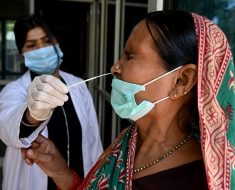It may be tick season, but there’s another disease-carrying insect you might want to watch out for: the kissing bug.
Officially named Triatominae, these bugs bite around your mouth or eyes, hence their “kissing bug” moniker. The bugs have been around for hundreds of years, but recently garnered attention after one bit a Delaware girl on the face. Previously, nobody even knew these bugs lived in Delaware, because they’re more prevalent in warmer climates, explains Jim Fredericks, Ph.D., chief entomologist and vice president of technical and regulatory affairs for the National Pest Management Association.
“I don’t know if one got transported to Delaware in the back of a pick up truck or if they’ve kind of always been there and no one found them previously,” he says.
People are concerned because kissing bugs can transmit Chagas disease, which can be deadly if untreated.
But should you really be worried about these tiny foes? Here’s everything you need to know about Chagas disease and kissing bugs.
Where do you find kissing bugs?
Kissing bugs live in 28 states, but are most prevalent in Texas, New Mexico, and Arizona, according to Texas A&M University. Outside the United States, they inhabit Mexico, Central America, and South America.
What is the kissing blood disease?
Chagas is an inflammatory condition that often goes undetected only to cause health problems later in life.
“Chagas is a very nasty disease that is notoriously challenging to treat,” says Dr. Aileen Marty, M.D., and professor of Infectious Diseases in the Department of Medicine at Florida International University.
The disease occurs in two phases: acute and chronic. The first lasts up to two months after infection. If caught early, medications can kill the parasite that causes Chagas. The problem is that many patients don’t exhibit symptoms.
“It is often called, ‘The Silent Killer,'” says Marty. “This is because Chagas is typically a chronic but slowly debilitating disease that can permanently damage your heart, intestine, and other organs.”
Untreated, the parasites hide in your body and can damage heart and digestive muscles, according to the World Health Organization. As a result, people may experience abdominal pain, cardiac arrhythmias, or heart failure.
How is Chagas transmitted?
Not everyone bite leads to infection, and not all kissing bugs spread Chagas. Essentially, the pests pick up Chagas by feeding on an infected animal or human. The parasite lives inside the bug and is released in the insect’s poop. After feeding, kissing bugs defecate near the bite. The parasite is then usually rubbed or scratched into the wound.
Chagas can also be transmitted through blood transfusions, organ transplants, childbirth, and contaminated food and drinks, according to The University of Texas at Austin.
What are the symptoms of Chagas disease?
Signs can easily be mistaken for the flu since fever, body aches, headaches and vomiting are the most noticeable symptoms. However, some people develop swelling near the bite.
How is Chagas disease treated?
Currently, there are two medications that treat Chagas disease, nifurtimox and benznidazole. They can cure people of the disease when prescribed early in the acute phase. However, medications don’t effectively treat advanced Chagas.
Should I be worried about getting Chagas disease?
There’s no reason to panic, according to Fredericks. Kissing bugs are a bigger problem in rural areas of Central or South America where people live in houses without screens or strong foundations.
“If you’re staying in a modern structure chances are it’s not going to be infested with kissing bugs,” he says.
However, people visiting regions where Chagas is more prevalent should be cautious. Modern hotels and rental properties are generally safe, but Fredericks recommends checking for cracks and crevices when staying in rural areas.
Source: Read Full Article





